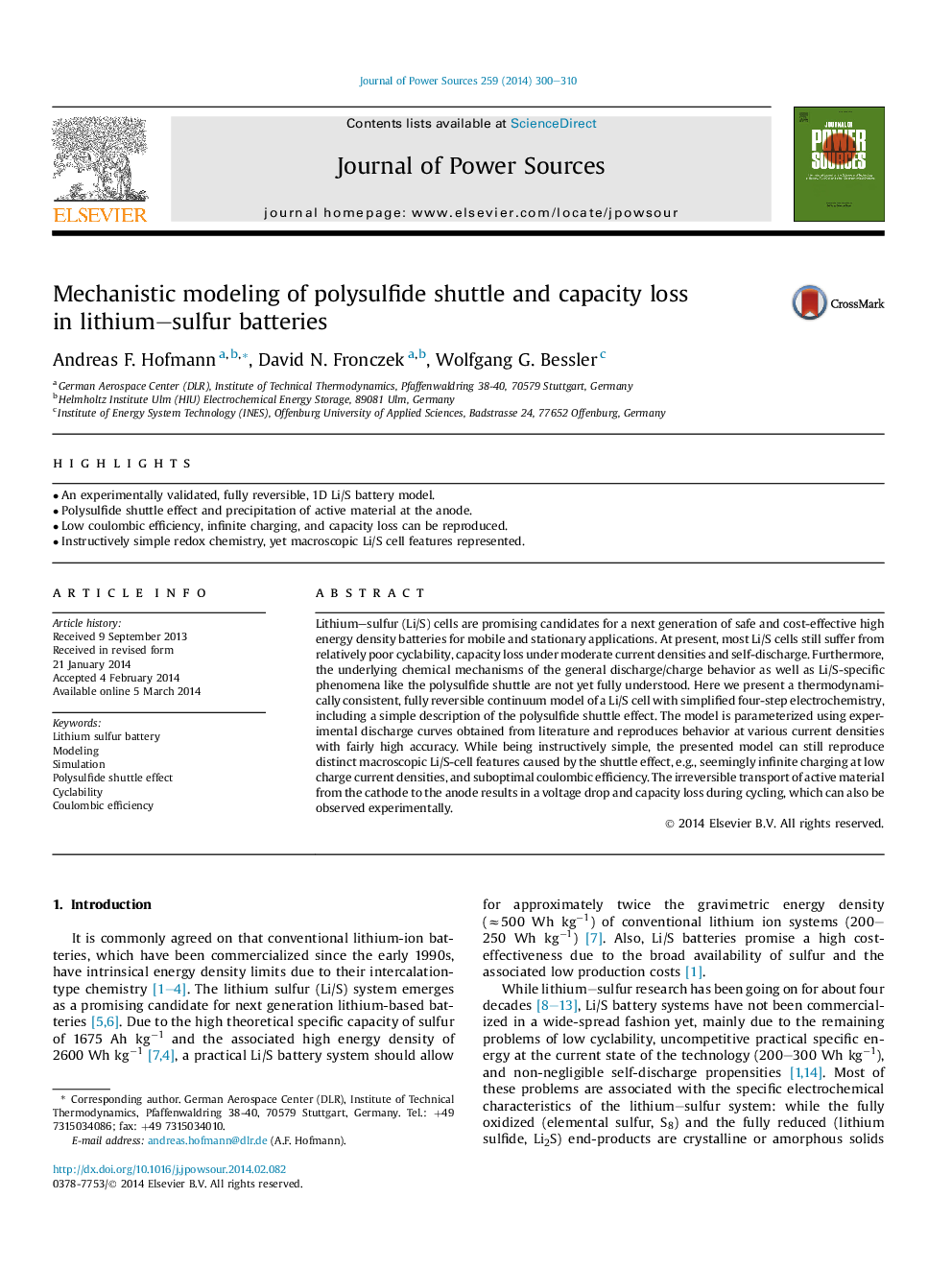| Article ID | Journal | Published Year | Pages | File Type |
|---|---|---|---|---|
| 1286871 | Journal of Power Sources | 2014 | 11 Pages |
•An experimentally validated, fully reversible, 1D Li/S battery model.•Polysulfide shuttle effect and precipitation of active material at the anode.•Low coulombic efficiency, infinite charging, and capacity loss can be reproduced.•Instructively simple redox chemistry, yet macroscopic Li/S cell features represented.
Lithium–sulfur (Li/S) cells are promising candidates for a next generation of safe and cost-effective high energy density batteries for mobile and stationary applications. At present, most Li/S cells still suffer from relatively poor cyclability, capacity loss under moderate current densities and self-discharge. Furthermore, the underlying chemical mechanisms of the general discharge/charge behavior as well as Li/S-specific phenomena like the polysulfide shuttle are not yet fully understood. Here we present a thermodynamically consistent, fully reversible continuum model of a Li/S cell with simplified four-step electrochemistry, including a simple description of the polysulfide shuttle effect. The model is parameterized using experimental discharge curves obtained from literature and reproduces behavior at various current densities with fairly high accuracy. While being instructively simple, the presented model can still reproduce distinct macroscopic Li/S-cell features caused by the shuttle effect, e.g., seemingly infinite charging at low charge current densities, and suboptimal coulombic efficiency. The irreversible transport of active material from the cathode to the anode results in a voltage drop and capacity loss during cycling, which can also be observed experimentally.
